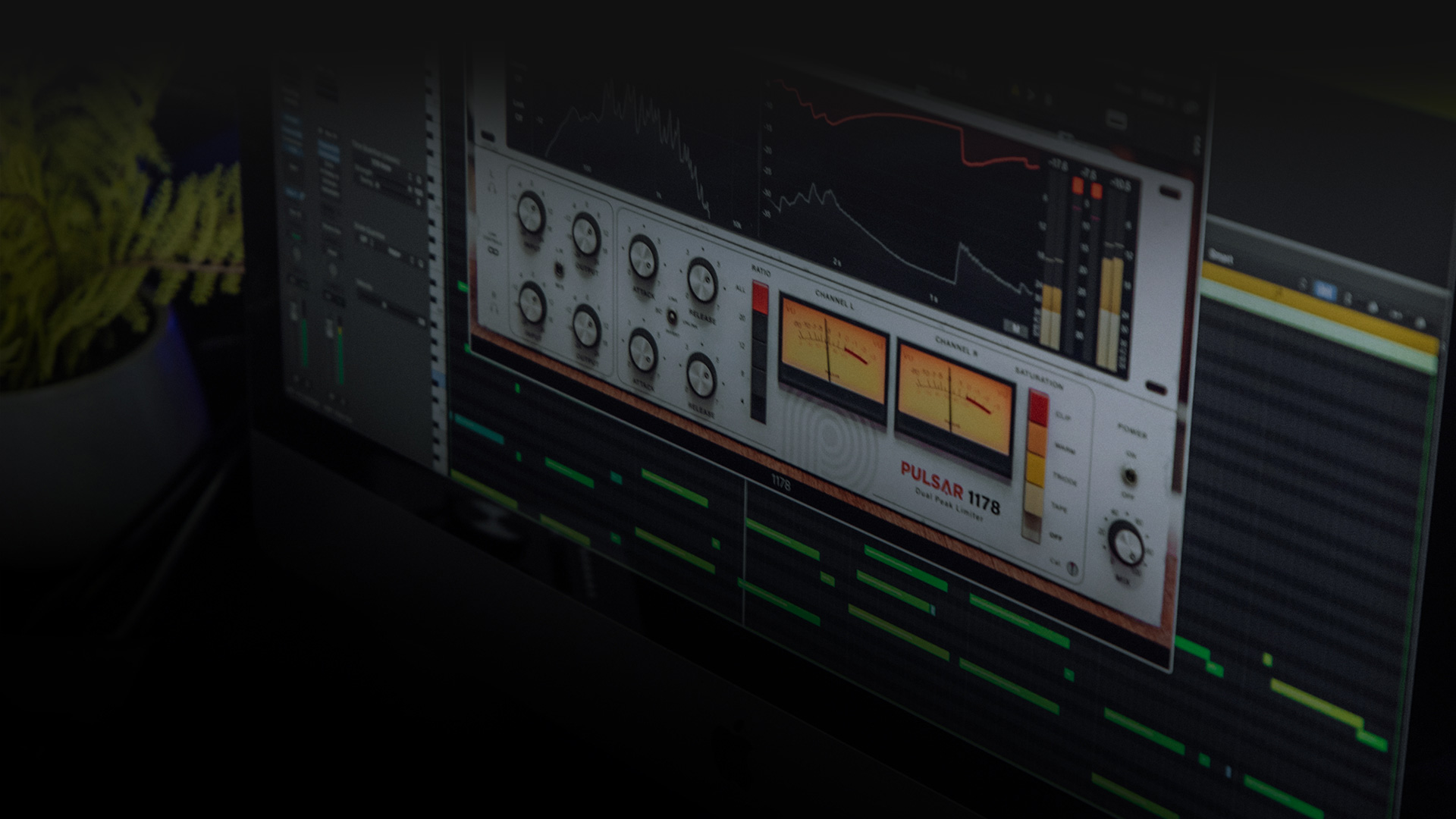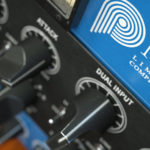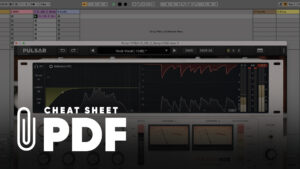Going Further with Sidechain Compression
- Posted on

Sidechaining is one of the best known music production techniques. Any music production 101 course will cover how to duck your bass when your kick hits, or how to create pumping pads, but sidechaining can also be used in more complex and subtle ways to achieve some powerful results.
Below we’ve outlined a few more specialized sidechain techniques that you can use to improve your sound, thanks to Pulsar 1178’s dedicated sidechain options.
To try these techniques out for yourself, you can get a 14-day free trial of Pulsar 1178.
The sidechains you never knew about
A sidechain signal is any audio signal that triggers a compressor’s response. Usually this signal is an exact duplicate of the signal running into the compressor, and many don’t even know that the sidechain exists.
Sidechain signals become more apparent when we use a different track to trigger the compressor, for example using a kick drum to trigger compression over a bass part. In either case, there’s always a ‘sidechain’ within your compressor’s architecture.
Pulsar 1178’s sidechain section offers some powerful extra features, one of which is EQ. The plugin’s EQ doesn’t affect the audible output of the plugin, rather it changes the tonality of the sidechain signal, thus affecting how the compressor reacts to and processes the incoming audio.
High-pass filtering a sidechain for a calmer response
Removing or reducing low frequencies from the sidechain signal is one of the most common sidechain techniques, and you’ll often see a simple high-pass or low-shelf control on studio hardware or compressor plugins.
The result is in a compression response that’s not as influenced by the kick, and since the kick and other low frequencies are often the loudest frequencies in a musical audio signal, the end-product of sidechain high-passing is a more natural sound with less ‘pumping’ or ‘sucking’ from heavy compression.
This is particularly true in a drum mix, or in the mixdown of an entire track.

EQing a sidechain signal

This gives you lots of flexibility to bring down, say, the low mids and high frequencies if your snare and hi-hats are making your compressor a bit too aggressive. Or you can increase the effect an element is having over the compressor’s response by applying a boost.
Here are some examples of sidechain EQ in use…
Using sidechain EQ to reduce boxiness in a mix

This can be dealt with by boosting this region in your sidechain EQ. This boost won’t be audible; instead it will cause the compressor to react more heavily when this region of your audio plays, reducing this frequency area’s overall power and dominance.
Retiming a sidechain signal (lookahead and lookbehind)

Thanks to being a digital plugin, the compressor can effectively look into the future to know how the incoming signal will behave before it actually plays, meaning that compression can be triggered slightly early.
Using Lookahead for extra tight bass ducking
Lookahead can be used to improve a modern compression staple: ducking your bass to your kick. This is where a longer, slower bass signal is compressed only when a kick plays, creating a ‘gap’ in the bass for the kick to ‘fall into’, conserving headroom and making the kick more defined.
Load Pulsar 1178 on a bass channel, and set your kick channel as its External sidechain Source. Set the attack as fast as possible, in this case means setting it to (or close to) 7.


By introducing Lookahead, we can make sure that the bass is fully ducked out of the way by the time the kick hits. Even with a very fast Attack, without Lookahead there will be a very short period of time when the bass is not fully ducked out of the way of the kick, losing us some headroom as the kick and bass combine to cause a short increase in overall level.
This gives us an even tighter duck providing maximum impact!
Using Lookbehind to delay compression response
Aside from its characterful and authentic sound, Lookbehind is one of the many ways Pulsar 1178 stands out from the compressor crowd. It delays the activation of your compressor.
If you set lookbehind to 5ms, the plugin would not begin to compress your audio until five milliseconds after the audio crosses the threshold volume.
How is Lookbehind different from an Attack control?

With Lookbehind, you can use a quick Attack time – right down to 0.02 milliseconds thanks to FET-style compression – but have this Attack portion start a few milliseconds after it usually would.
Lookbehind for clear transients and more dynamic range

The compressor allows up to 10 milliseconds of lookbehind. A good technique is to max out the lookbehind and then slowly reduce the value until you have a sound you like.
The result: a clearer transient that ‘pops’ out of the mix, avoiding any compression. The compressor kicks in after the transient, reducing the rest of the sound and increasing the overall dynamic range of the sound.
More Sidechain Techniques
Gating a snare without worrying about hi-hat bleed
If you’re working on a multitrack drum recording, it’s quite common to gate your close mic’d drums so that no mic bleed is audible. However, if there is too much mic bleed then the gate will be opened by the bleeding signal from other drums.
We can easily deal with this problem using the 1178.
Say we have a close miked snare drum that you are struggling to gate because there is too much bleed from the hi hat. To deal with this problem we need to bring down the volume of the bleeding hi hat in the snare recording.

Place Pulsar 1178 before your gate and boost the high frequencies using a high shelf. Because hi hats are located in the upper end of the frequency spectrum, and snares are in the low mids, this will compress the bleeding hi hat making them quieter whilst leaving the snare untouched.
Now your snare will be much easier to gate without any unwanted hi hats bleeding into our signal.
Sidechain EQing to turn your compressor into a de-esser
Using Pulsar 1178’s sidechain EQ we can easily fashion a makeshift de-esser to remove sibilant frequencies in vocal recordings. Sibilance occurs when vocalists sing “ess” sounds. These syllables are particularly high in energy and thus can jump out of a vocal take and sound unpleasant and harsh.
Since sibilant frequencies occur in the range of 3-8kHz, we can use the compressor’s sidechain EQ to target these frequencies.

Emphasizing transients with lookbehind and All Buttons In
We’ve already discussed how you can use lookbehind to keep transients clean. We can emphasize those transients even more with a feature on the 1178 call ‘All Buttons In mode’.

This setting replicates a trick first carried out on the old 1176/1178 hardware models, where pressing all the Ratio buttons in at once would cause the compressor to react very extremely, (even in its timing behavior).
This gives a characterful “smashed” sound, really squashing your audio, and when combined with some lookbehind it’s truly unique, leaving sharp, quick transients unscathed, and applying its heavy, characterful compression to the rest of the sound.



